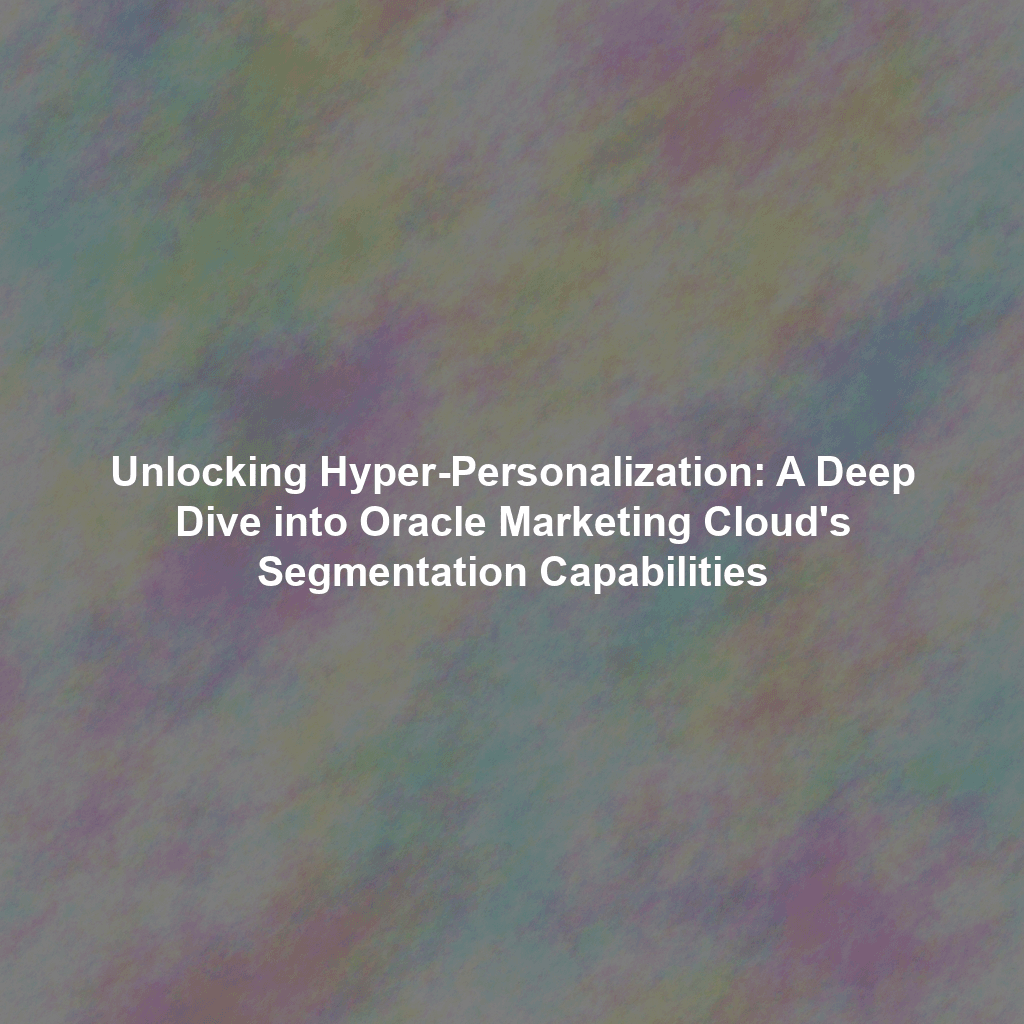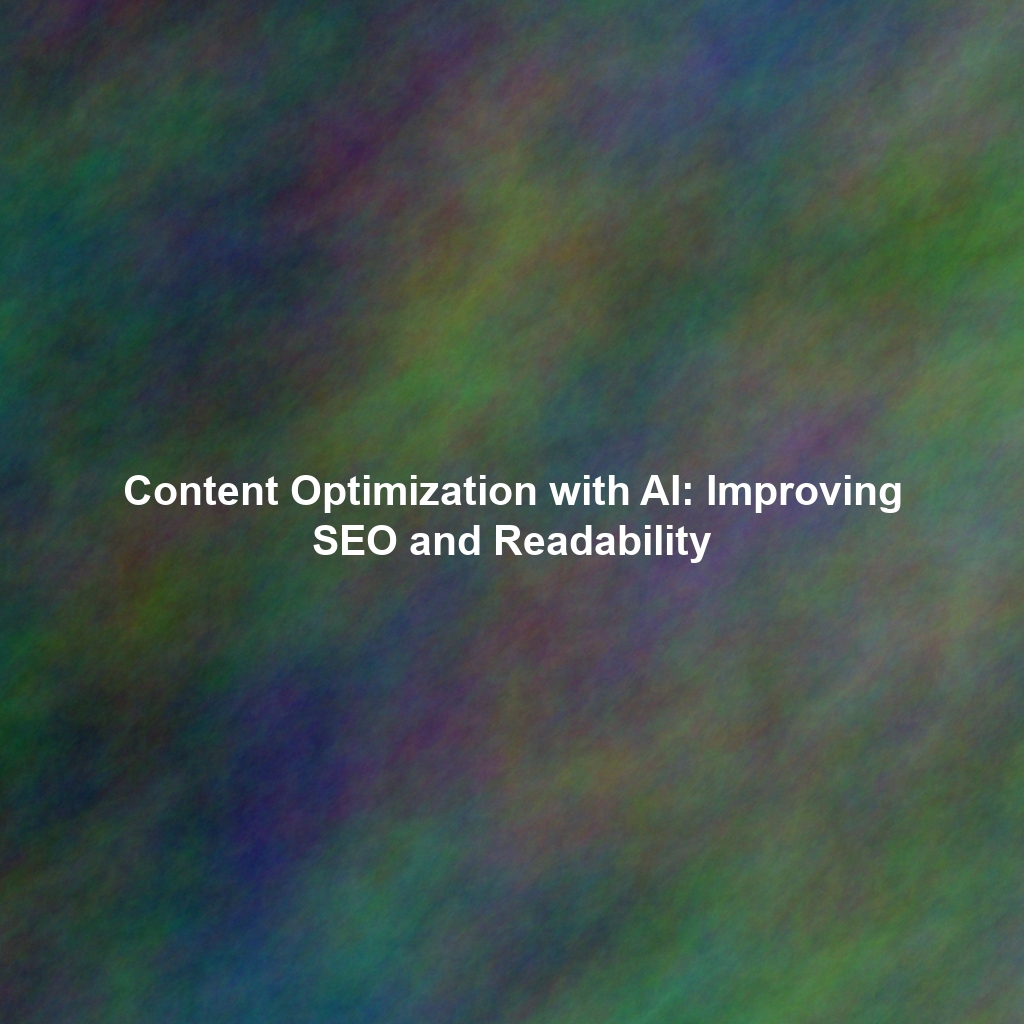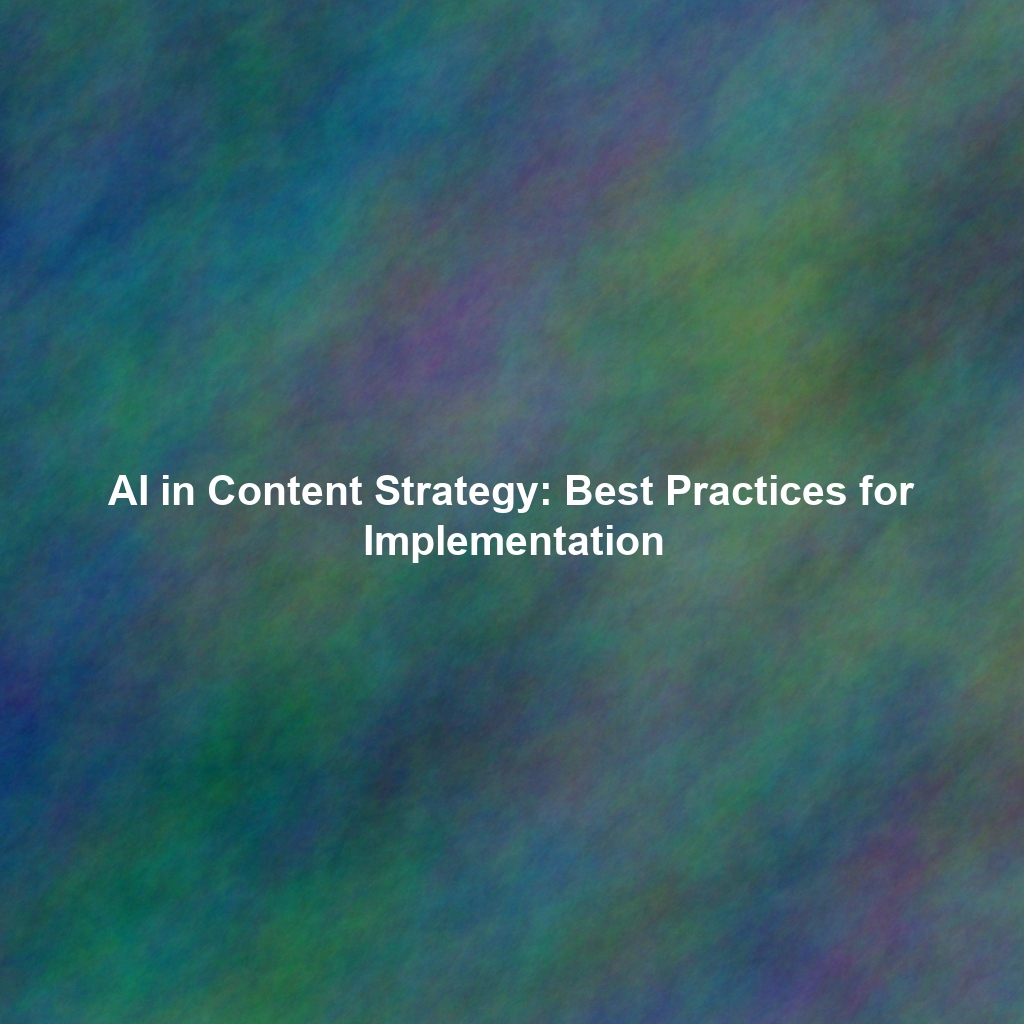The Strategic Imperative: Why Granular Segmentation Drives Marketing Success
Before diving into the “how,” let’s unequivocally establish the “why.” Segmentation is the strategic process of dividing your entire audience into smaller, more homogeneous, and manageable groups based on shared characteristics. These characteristics can range from foundational demographics and historical purchase behavior to real-time website activity, engagement levels, and even predictive indicators of future intent. Think of it as moving from a broad brushstroke approach to a fine-tipped pen, allowing for surgical precision in your outreach. By understanding these nuances and tailoring your messaging, you can achieve:
- Exponentially Increased Engagement: Relevant content captures attention, encourages interaction, and fosters a deeper connection. When a message feels like it was designed just for them, recipients are far more likely to open, click, and consume.
- Significantly Higher Conversion Rates: Personalized offers, calls-to-action, and product recommendations are inherently more compelling and directly address the recipient’s needs or pain points, leading to a demonstrably higher likelihood of driving desired actions and sales.
- Improved Customer Loyalty & Retention: Customers feel genuinely valued and understood when they receive communications tailored to their specific needs and interests. This personalized attention builds trust, fosters long-term relationships, reduces churn, and increases customer lifetime value (CLTV).
- Optimized Marketing Spend & Efficiency: By focusing resources on the most receptive and high-potential segments, you reduce wasted ad impressions and irrelevant outreach. This precision targeting improves the efficiency of your marketing spend, leading to a better return on investment.
- Enhanced Brand Perception: Brands that consistently deliver relevant, personalized experiences are perceived as more intelligent, customer-centric, and trustworthy, directly contributing to their **E-E-A-T (Experience, Expertise, Authoritativeness, Trustworthiness)**.
- Deeper Customer Insights: The process of segmentation itself forces a deeper understanding of your customer base, revealing patterns and insights that can inform broader business strategy, product development, and service improvements.
The Cost of Irrelevance: A Silent Killer
In a world saturated with information, irrelevant messages are not just ignored; they actively damage your brand. They lead to unsubscribes, spam complaints, and a negative perception. Segmentation is your antidote to this, ensuring every communication adds value.
Leveraging Behavioral Data for Powerful, Real-Time Segmentation
Oracle Marketing Cloud excels at capturing, processing, and utilizing rich behavioral data in real-time. This data provides invaluable, dynamic insights into how your audience interacts with your brand across various digital touchpoints. It moves beyond static demographics to understand active intent and engagement. Some key sources of behavioral data include:
- Website Activity: Granular tracking of pages visited, products viewed, content consumed, forms submitted, search queries, and time spent on specific sections.
- Email Engagement: Detailed metrics on email opens, clicks on specific links, forwards, replies, and unsubscribes.
- Purchase History: Products purchased, categories explored, order frequency, average order value, last purchase date, and return behavior.
- Mobile App Interactions: App opens, feature usage, in-app purchases, session duration, and specific actions taken within the app.
- Social Media Interactions: Likes, shares, comments, mentions, and engagement with your brand’s social content (often integrated via social listening tools).
- Customer Service Interactions: Chat transcripts, support ticket history, and call center notes (when integrated).
Creating Dynamic Segments Based on Real-Time Website Behavior (Eloqua Example)
Imagine you’re running a B2B SaaS company selling project management software. Using Oracle Eloqua, you can create dynamic segments based on website behavior that indicate specific intent. For instance:
- Segment: “High-Intent Prospects – Feature X” for users who viewed your pricing page, then visited the “Feature X” solution page more than once in the last 48 hours, but haven’t requested a demo.
- Action: Trigger a personalized email campaign showcasing a case study specifically highlighting how Feature X solves a common industry challenge, or offer a direct link to schedule a demo focused on that feature.
- Impact: This precision targeting ensures the follow-up is highly relevant, significantly increasing the likelihood of demo requests.
Segmenting Based on Email Engagement & Lifecycle Stage (Responsys Example)
Email engagement data is another goldmine for refining your audience segments and optimizing nurture flows. Oracle Responsys allows for sophisticated segmentation based on how users interact with your email campaigns and their lifecycle stage:
- Segment: “Re-engagement Candidates” for subscribers who haven’t opened any emails in the past three months, despite being active previously.
- Action: Try sending them a different type of email (e.g., a survey to understand their disengagement, a personalized offer based on past interests, or a video message from your CEO) with a compelling subject line to win them back.
- Segment: “Highly Engaged Advocates” for subscribers who consistently open, click, and share your emails, and have made multiple purchases.
- Action: Reward them with exclusive content, early access to new product launches, or invitations to VIP events to deepen loyalty and encourage advocacy.
- Impact: This approach moves beyond generic re-engagement to tailored strategies that maximize the potential of each subscriber.
Predictive Analytics: Anticipating Customer Needs & Proactive Intervention
Oracle Marketing Cloud’s predictive analytics capabilities take segmentation to the next level by leveraging machine learning to forecast future customer behavior. This allows you to move from reactive marketing to proactive, intelligent intervention. By analyzing historical data and real-time signals, it can identify which customers are most likely to churn, make a purchase, or engage with specific content, allowing you to target these segments with tailored, timely interventions.
1. Identifying Potential Churn Risks (Subscription Businesses)
Imagine a SaaS or subscription-based business. Predictive analytics can identify customers who are at a high risk of canceling their subscriptions based on factors like:
- Decreased website or app activity (e.g., login frequency, feature usage).
- Declining email engagement (e.g., fewer opens, clicks).
- Negative sentiment in customer service interactions or surveys.
- Changes in billing status or payment issues.
- Comparison to historical churn patterns of similar users.
Action: Proactively reach out to these “at-risk” customers with personalized offers (e.g., a discount on their next billing cycle, an exclusive feature preview), improved customer service outreach, or exclusive content designed to address their concerns and demonstrate value, thereby preventing churn before it occurs.
2. Predicting Purchase Propensity (E-commerce)
Oracle Marketing Cloud can also predict which customers are most likely to make a specific purchase or convert on a particular offer. This allows you to focus your marketing efforts on those with the highest potential for conversion, optimizing your ad spend and sales efforts.
- Scenario: A customer has repeatedly viewed a specific product category (e.g., high-end cameras) or added items to their cart multiple times without completing a purchase.
- Predictive Insight: Predictive analytics might identify them as a “High-Potential Buyer” for that category.
- Action: Target them with a personalized email campaign featuring that specific product category, a compelling time-sensitive offer, or a comparison guide that addresses common purchase hesitations. You could also dynamically adjust website content for them.
- Impact: This precision ensures your most valuable offers are delivered to the most receptive audience, significantly boosting conversion rates.
Dynamic Content: Delivering Personalized Experiences in Real-Time & At Scale
Segmentation allows you to identify your target audience; dynamic content allows you to deliver truly personalized experiences *within* each communication. Dynamic content adapts in real-time based on the recipient’s profile, behavior, and context, ensuring that each customer sees content that is uniquely relevant to them. This moves beyond simply sending different emails to different segments; it’s about personalizing the *content within* those emails or web pages.
1. Personalizing Email Subject Lines and Body Content
Using dynamic content, you can personalize email subject lines to dramatically increase open rates. Beyond the recipient’s name, consider their location, recent activity, or company name to create hyper-relevant hooks (e.g., “Exclusive Offer for [City Name] Residents,” “Your [Product Category] Picks Inside”).
Within the email body, you can display different content blocks, images, or calls-to-action based on the recipient’s interests, purchase history, loyalty status, or even their predicted next best action. For example:
- A customer who has recently purchased running shoes might see content about new running apparel, accessories, or upcoming local running events.
- A customer who has purchased hiking boots might see content about popular hiking trails, camping gear, or wilderness survival tips.
- A B2B prospect who downloaded a whitepaper on “Cloud Security” might see dynamic content promoting a webinar on “Advanced Data Encryption.”
2. Dynamically Updating Website Content & Mobile App Experiences
Dynamic content isn’t limited to email. You can also use it to personalize website content and mobile app experiences based on the visitor’s profile, browsing behavior, and real-time context. Oracle Marketing Cloud allows for this through integration with your CMS or direct JavaScript implementation.
- Product Recommendations: Display different product recommendations on your homepage or product pages based on their browsing history, past purchases, or items in their cart.
- Personalized Banners/Offers: Show a returning customer a specific discount or promotion based on their loyalty tier or previous interactions.
- Localized Content: Dynamically display content (e.g., store locations, language, currency, specific events) based on the visitor’s geographic location.
- Behavioral CTAs: Personalize the call-to-action based on their previous interactions with your brand (e.g., “Continue Your Application” for a returning prospect).
- App Onboarding: Tailor the onboarding flow within a mobile app based on the user’s declared interests during sign-up or their initial app usage patterns.
Best Practices for Effective Segmentation & Personalization in Oracle Marketing Cloud
While Oracle Marketing Cloud offers powerful segmentation and personalization capabilities, it’s crucial to follow strategic best practices to ensure you’re using them effectively and ethically, maximizing your impact.
- Start with a Clear Strategy & Measurable Goals: Before building any segment or dynamic content, define your precise marketing objectives and the key performance indicators (KPIs) you aim to improve. This provides a clear roadmap and allows for objective measurement.
- Ensure Data Accuracy & Hygiene: Your segmentation is only as good as your data. Implement robust data hygiene practices (standardization, deduplication, enrichment) to ensure your data is accurate, complete, and up-to-date. Garbage in, garbage out.
- Test, Learn, and Optimize Continuously: Marketing is an iterative process. Continuously test different segmentation strategies, content variations, and personalization rules. Utilize A/B testing within Oracle Marketing Cloud to validate hypotheses and optimize your results. Analyze performance data rigorously and adapt.
- Don’t Over-Segment (Avoid “Segment Fatigue”): While granularity is good, creating too many overly narrow segments can lead to operational inefficiencies, content creation bottlenecks, and diminishing returns. Focus on the segments that are most likely to drive significant results and are actionable.
- Comply with Privacy Regulations (GDPR, CCPA, etc.): Ensure all data collection, storage, and usage practices for segmentation and personalization strictly comply with relevant privacy regulations (e.g., GDPR, CCPA). Prioritize transparency, obtain explicit consent where required, and provide users with control over their data.
- Document Your Segmentation Logic & Rules: Keep a clear, accessible record of how your segments are defined, the criteria used, and the purpose of each segment. This ensures consistency, facilitates team collaboration, and simplifies future audits or adjustments.
- Focus on the Customer Journey: Design your segments and personalized experiences to align with different stages of the customer journey (awareness, consideration, purchase, retention, advocacy). This ensures relevance at every touchpoint.
- Leverage Cross-Channel Integration: Don’t limit segmentation to a single channel. Use insights from email engagement to personalize website content, or website behavior to inform mobile app messages. A unified customer view across channels maximizes impact.
- Prioritize Zero-Party Data: Actively ask customers for their preferences and intentions. This “zero-party data” is highly accurate and provides direct insight into their desires, fueling more effective personalization.
Real-World Example: Increasing Conversion Rates with Personalized Product Recommendations
A leading online retailer specializing in outdoor gear utilized Oracle Marketing Cloud (specifically Responsys) to segment their customer base with advanced precision, based on a combination of purchase history, browsing behavior, and declared interests. Their goal was to increase conversion rates for specific product categories.
Strategy:
- Data Collection: Meticulously tracked website activity (product views, categories browsed, search queries), past purchases (product types, brands), and integrated declared interests from their loyalty program.
- Segmentation: Created dynamic segments such as:
- “Hiking Enthusiasts” (viewed hiking boots, tents, backpacking gear).
- “Cycling Aficionados” (viewed road bikes, cycling apparel, bike accessories).
- “Winter Sports Ready” (purchased skis/snowboards last season, browsing winter apparel).
- Dynamic Content Implementation:
- Website: Implemented dynamic content blocks on their homepage and category pages using Responsys’s web personalization capabilities. If a “Hiking Enthusiast” visited, the hero banner would feature new hiking trails and gear, and product carousels would display recommended hiking boots or backpacks.
- Email Campaigns: Triggered personalized email campaigns. For “Cycling Aficionados,” emails showcased new bike models, cycling routes, and exclusive discounts on cycling apparel. For “Winter Sports Ready” customers, pre-season emails offered early access to new ski/snowboard equipment and tune-up services.
Impact: As a direct result of this hyper-personalized approach, the retailer saw a **20% increase in conversion rates** for targeted product categories and a **15% increase in average order value (AOV)**, as customers were presented with highly relevant cross-sell and upsell opportunities. This demonstrates how advanced segmentation and dynamic content directly translate into measurable business growth and enhanced customer satisfaction.
The Future of Segmentation & Personalization: Beyond 2025
The capabilities of Oracle Marketing Cloud in segmentation and personalization will continue to evolve rapidly, driven by advancements in AI, machine learning, and the increasing demand for real-time, adaptive experiences. Key trends to anticipate include:
- Real-Time, Segment-of-One Personalization: AI will enable true real-time personalization, where every interaction is dynamically adapted based on a user’s immediate context and micro-behaviors, moving beyond pre-defined segments to individual experiences.
- Predictive Journey Orchestration: AI will not only predict behavior but also proactively orchestrate entire customer journeys, dynamically adjusting the next best action, channel, and message based on predicted outcomes and individual responses.
- Enhanced AI-Driven Content Generation: Integration with generative AI will allow for the automated creation of personalized content variations (e.g., email copy, ad headlines) tailored to specific segments and predicted preferences, at scale.
- Voice & Conversational AI Integration: Segmentation insights will power more personalized interactions within voice assistants and chatbots, allowing for tailored responses and recommendations in conversational interfaces.
- Cross-Reality Personalization (AR/VR): As immersive technologies become more mainstream, segmentation will inform personalized experiences within augmented and virtual reality environments, offering new frontiers for engagement.
- Unified Customer Data Platforms (CDPs): Deeper integration with CDPs will ensure Oracle Marketing Cloud has access to an even richer, more unified view of customer data from all online and offline sources, fueling more sophisticated segmentation.
Staying ahead will require continuous investment in data infrastructure, AI capabilities, and a relentless focus on the ethical implications of advanced personalization.
Conclusion: Embrace Hyper-Personalization with Oracle Marketing Cloud for Sustainable Growth
In conclusion, Oracle Marketing Cloud provides a robust, enterprise-grade platform for unlocking hyper-personalization through advanced segmentation techniques. By strategically leveraging rich behavioral data, powerful predictive analytics, and dynamic content capabilities, you can deliver highly relevant, engaging, and impactful experiences to your audience. This precision targeting directly drives increased engagement, significantly higher conversion rates, and cultivates enduring customer loyalty. It transforms your marketing efforts from generic outreach to a series of meaningful, personalized conversations.
Embrace the power of advanced segmentation. Invest in data hygiene, commit to continuous testing and optimization, and ensure strict compliance with privacy regulations. By doing so, you will unlock the full potential of Oracle Marketing Cloud, delivering personalized experiences that truly resonate with your customers and secure sustainable growth in today’s competitive digital landscape.
 Skip to content
Skip to content

